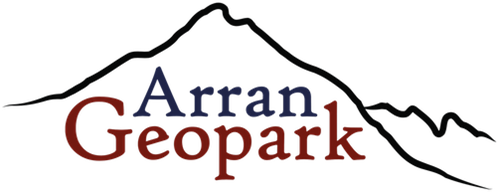The Isle of Arran was officially announced as a UNESCO Global
Geopark in April 2025. Arran contains a variety of rock types and
structures, vast archaeological and geological heritage, and an array of habitats that all make it a truly unique location. The island has a diverse range of plants and animals that benefit from the landscape and underlying geology, which means that Scotland’s ‘big five’ (golden eagles, red deer, red squirrels, otters and harbour seals) thrive here.
So, what is a UNESCO Global Geopark?
They are single, unified geographical areas where sites and landscapes of international geological significance are managed with a holistic concept of protection, education and sustainable development.UNESCO Global Geopark status is an international designation awarded to Earth’s most extraordinary places - just like Arran!
What Are the Benefits?
Geoparks celebrate the connections between geological heritage and all other aspects of natural and cultural heritage. Local people and visitors will have the opportunity to deepen their understanding of Arran’s natural heritage. We believe the international platform offered by UNESCO will stimulate geotourism, innovative local businesses, new jobs, and training opportunities.
Are Communities Involved?
Absolutely! Geoparks are managed by local communities, for local
communities and this is vital for their success. Our Board represents
many island organisations and it includes individuals with professional expertise in arts, education, farming, natural heritage, science, and tourism. UNESCO has no say in the Geopark’s management nor do they provide any direct funding.
Does This Mean New Rules and Regulations?
No, UNESCO Global Geoparks have no legal status and therefore they do not restrict any economic activity within their boundaries. Geoparks support sustainable development while ensuring natural heritage is safeguarded. Arran’s unique geology is the basis for a hugely diverse natural environment; where people, flora and fauna have thrived together for thousands of years.
Is UNESCO Status Permanent?
No, the status is revalidated every four years. If the Geopark continues to fulfil the required criteria, it will continue as a UNESCO Global Geopark for a further four-year period. This process of regular
assessment ensures that Geoparks continue to provide high standards in the key areas of “protection, education and sustainable development”.
Address
c/o Arran Community & Voluntary Service, Park Terrace, Lamlash, Isle of
Arran, KA27 8NB
Website
www.arran-geopark.org.uk
Email
info@arran-geopark.org.uk
www.arran-geopark.org.uk
Want to know more?
Read our detailed toolkit to give you more info and learn how to get engaged with our aspiring Geopark >
